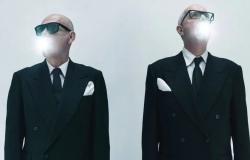
From hippies to the Italian far-right: how The Lord of the Rings influences different political movements
The other day I stumbled upon an interesting article from the BBC that exploredThe fascination of countercultural social movements of the 60s for JRR Tolkien’s work, The Lord of the Rings. This article brought to mind a historical graffiti that used to adorn the walls of the streets of San Francisco or London, a kind of primitive meme before the current term existed: “Frodo Lives!”. This phrase, which is even mentioned in the DVD extras of Peter Jackson’s films, encapsulates the way in which Tolkien’s work became a symbol for the social movements of the time.
In those troubled years, The Lord of the Rings became more than just an epic fantasy story. Became a moral compass for young activists who sought inspiration in their fight against war, oppression and environmental degradation. According to him, he already explained in 1971 Bob Borsley In a well-known article for the Tolkien Society, the literary trilogy served as a form of escapism for a generation traumatized by the Vietnam War and determined to challenge the established order. Something in which he participates shortly after George Lucas with his first Star Wars film, becoming one of the best examples of the depth that those ideas would have.
From Khazad-dûm Bridge to the Golden Gate
As a result of the author’s Catholic beliefs, the characters in Tolkien’s work embodied such archetypal values that they ended up resonating with the ideals of countercultural movements. For example, Frodothe little hobbit who carries the weight of the world on his shoulders, became a symbol of peaceful resistance and personal sacrifice, and of the responsibility of an entire generation of young people inheriting a world still suffering from the aftermath of World War II. . Gandalfthe wise magician, represented the fight against oppressive power and the search for knowledge and truth. Tom Bombadilthe mysterious inhabitant of the Old Forest, embodied the connection with nature and the simplicity of life. treebeard, the ancient ent, personified the patience and wisdom of the land itself. Or the evident industrialism of Saruman to which Tolkien confronts his heroes by advocating an economy based on freedom, creativity and trust, as opposed to greed, government control and unbridled capitalism from which we already suffer its social and environmental consequences.
These characters became icons of the counterculture, appearing on graffiti, t-shirts, records and badges. His words and actions found their way into the arguments and minds of those who sought an alternative path in a world dominated by violence and greed. The trilogy, despite being written by an author considered conservative, attracted a countercultural audience due to its criticism of industrialization and his focus on nature, individual freedom, and resistance against oppressive power. It is not surprising that these messages also had a cultural manifestation. From university fanzines to the popular music of the time, including bands like The Beatles and Led Zeppelinwhere we find references to Tolkien mythologywhich, together with the first economic edition of the bookscontributed to his popularity among young people.
Another world is possible
Tolkien’s political vision as radical in his rejection of authoritarianism and his defense of limited government, despite the large number of kings, monarchs and royal genealogies that populate its pages. It is suggested that Tolkien, through his work, advocated values such as individual freedom, personal responsibility and resistance against state oppression. Kayla Spencer points out in an interesting text that the popularity of The Lord of the Rings among hippies It wasn’t just a fad..
Tolkien’s trilogy became a sacred text for many, a source of inspiration and guidance in turbulent times. Hippie communes adopted names from Middle-earth places, such as Rivendell or Lothlórien, and organized group readings of the books. Folk music, which was booming at that time, was infused with references to Tolkien’s work, with bands such as the aforementioned Led Zeppelin and Jethro Tull incorporating lyrics inspired by his saga. It was also the perfect breeding ground for the flourishing of authors such as Michael Moorcock, Ursula K. Le Guin or Jack Vance, that each one in their own way reacted to this maturation of the fantasy genre and that today continue to be a reference for current authors such as Sanderson, Martin or Abercrombie.
Another interpretation of Tolkien
However, the countercultural phenomenon of the 1960s was not the only political movement that appropriated Tolkien’s work. Pulling the thread I found an article by Gzeromediawhich explains how, paradoxically, the current Italian right He has also found inspiration in Middle Earth. Giorgia Meloni, the Italian prime minister and leader of the Brothers of Italy party, says she is a fervent admirer of Tolkien and has used his work to boost her nationalist and ultraconservative agenda. Although we must not lose sight of the conservative, bourgeois and certainly privileged circumstances of Tolkien at the time of writing The Lord of the Rings, perhaps this new interpretation will be, to say the least, shocking.
At his final campaign rally, Insegno Pinethe Italian voice of Aragorn in the Italian version of The Lord of the Rings, He presented it by invoking the Kingdom of Men of Middle Earth with “Children of Rohan, my brothers, people of Rome…the day of defeat may come, but it is not this day!” Now, Insegno’s voice can be heard across Italy in the new Tolkien exhibition, a €250,000 traveling exhibition funded by the Italian culture ministry and inaugurated by Meloni, which consider the trilogy sacred texts.
Meloni’s tribute to Tolkien is no coincidence. The Lord of the Rings has influenced Italy’s conservative movement since the fall of Mussolini. It is something that in general imagery and mythology with northern European roots they share with far-right movements around the world. After the Italian government defected to the Allies during World War II, fascists joined the Italian Social Movement, alias MSI, and were largely excluded from postwar culture and politics. Veterans of fascism embraced Tolkien’s series, which launched in Italy in 1970 with a foreword by the philosopher and essayist Elemire Zollawho argued that The books represented conservatives’ rejection of the modern world and an allegory about “pure” ethnic groups. fighting pollution from foreign invaders.
The books provided the MSI with a means to reconstruct a post-fascist far-right identity. Instead of identifying with the warrior Aragorn, the MSI glorified hobbits, which reflected the weakness of his party. They even established “Hobbit camps” for young activistsmolding a new generation of conservatives to see themselves as a fighting brotherhood against the “All Seeing Eye” of the European Left.
Meloni, like many members of the Brothers of Italy party he leads, apparently grew up attending these camps (yes, there were costumes). In his biography, he explains that he sees The Lord of the Rings as a nationalist, anti-globalization and hyperconservative story that has given you a way to explain their struggle to preserve tradition on socially acceptable terms. A message with which he rose to power with overtly nationalist rhetoric, going so far as to call for a naval blockade against illegal migrants and warning his followers of the conspiratorial tricks of globalism.
So what are the politics of Middle Earth? John PaganoTolkien expert and Barnard professor, thinks that The author would disagree with the appropriation of his work by Meloni.
“As long as [en los libros] People repress themselves to increase their own power, which demonstrates Tolkien’s meaning. Galadriel rejects the ring, Aragorn rejects the ring, Gandalf rejects the ring, the main idea is to eventually give up absolute power.”
After fighting in the trenches and losing friends during World War I, and after sending his two sons to fight in World War II, Tolkien launched the series in 1954 with a deep distrust of unchecked political power. Pagano doesn’t think Tolkien would like to be associated with Meloni’s immigration agenda either. “I mean, what saves Middle Earth? It was a coalition of the various races who united in a communal effort to resist against evil“.
It is important to note that this political appropriation of The Lord of the Rings goes against the fundamental values of the work and its author. JRR Tolkien was a strong defender of peace and tolerance, and his work was infused with a deep love for nature and community. The use of his work to promote divisive and exclusionary political agendas surely clashes directly with the spirit of his creation. Hence, Tolkien’s current revisionism and Meloni’s analysis of The Lord of the Rings differ radically from the approach of the hippies of the 1960s, where the struggle was for freedom, and not exclusionwhere the conflict was a defense and not a provocation.
“Hope is the only thing stronger than fear”
So going back to the ’60s, the mid-60s, the hippies and old Toby’s weed, those moments of rapid social change in the United States, accelerated by the 42 million Baby Boomers who came of age at a time when The Lord of the Rings was required reading in educational centers. In 1966, Time magazine wrote that “Going to university without Tolkien is like going without sneakers”. Sales of the trilogy skyrocketed in the 1960s, surpassing the Bible in 1967 and 1968much to the dismay of its devout Catholic author.
Regardless of the reading you want to give it, Tolkien’s work continues to be a mirror in which each generation sees its own fears and hopes reflected. Whether as a symbol of peaceful resistance or as a justification for xenophobia and nationalism, The Lord of the Rings will continue to be a source of debate and reflection for future generations.
In 3Dgames | Why 20 years later The Lord of the Rings and its special effects still look so good, and the drama that those responsible are experiencing today
In 3Dgames | There is a character in The Lord of the Rings who is much more powerful than Sauron and who could have saved Middle-earth without Frodo risking his life. Tom Bombadil
In 3Dgames | The first Lord of the Rings film was filmed in Cuenca, it was almost directed by Kubrick, and like Peter Jackson’s trilogy it was a technological marvel





